Pipelines, man camps and murdered Indigenous women in Canada
In Canada, resource extraction is not only endangering the land – but the lives of Indigenous women.
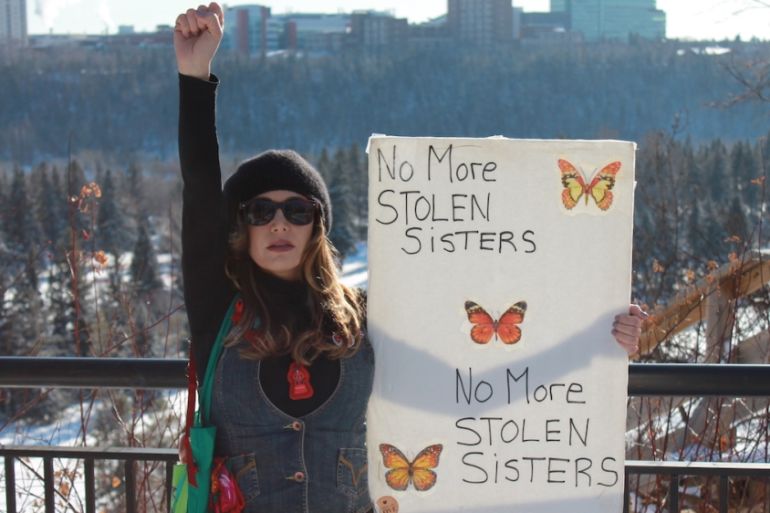
Alberta, Canada – April Wiberg, 38, will always hate the smell of baby oil.
More than 20 years after a traumatising encounter with a man twice her age at a “trick pad” operating under the cover of a massage parlour in Edmonton, Alberta, she is still triggered by that smell.
Keep reading
list of 4 itemsIndigenous people in Philippines’s north ‘ready to fight’ as tensions rise
Curfew announced for under-18s in Australia’s Alice Springs after unrest
‘We exist’: A Himayalan hamlet, forgotten by Indian democracy
“I will never forget the first guy,” she says, a distant expression momentarily settling upon her dark brown eyes.
April is visiting her good friend at her apartment near downtown Edmonton on a frigid winter afternoon. Sonya Purcell’s home represents comfort for April. The two have spent countless hours together, some of them organising events to advocate for the safety of Indigenous women and girls.
Sonya knows April’s story well. She knows it is full of hardship and redemption.
April wrings her hands nervously. “I will never forget the smell of baby oil,” she says, then takes a deep breath and refocuses.
“His hair: parted. Middle-aged. Blue-collar type.”
He would not take his eyes off her, she explains.
“That look in his eyes … He knew I was terrified, and he did it anyway.”
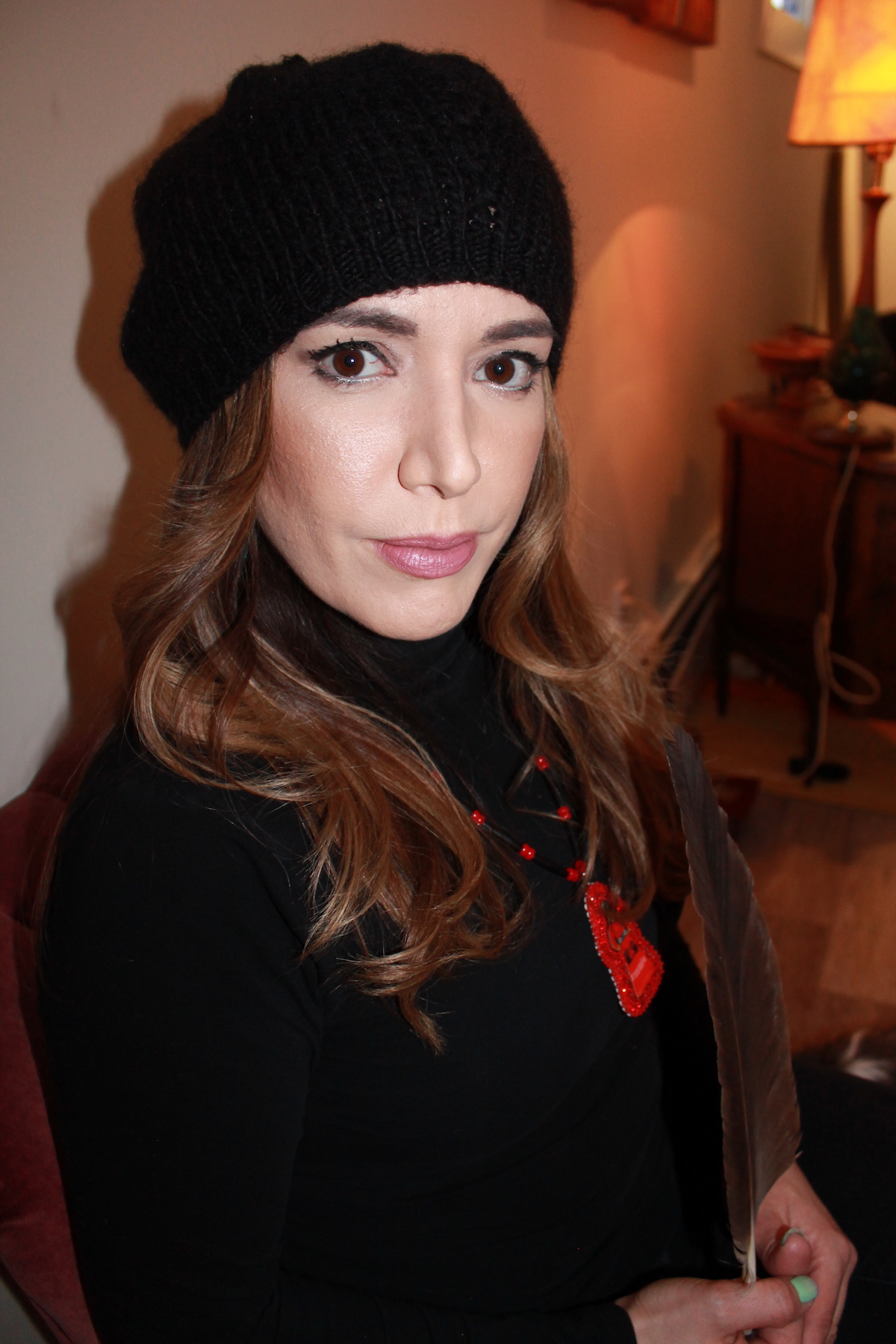
‘To numb my pain’
April is Cree from Mikisew Cree First Nation in northern Alberta but grew up in southern Saskatchewan, a province directly east of Alberta. She came from what she describes as a “broken, dysfunctional” home and experienced sexual, physical, emotional and verbal abuse growing up.
Her mother was absent for most of her childhood, dealing with the trauma of her own childhood spent in Canada’s residential school system, which ripped Indigenous children from their families and cultures and often subjected them to abuse and neglect.
April’s father, who was not Indigenous, raised her and her sister in a small town to the best of his ability. But there was always chaos, she says.
April and her sister were the only Indigenous children in their school, and they were often singled out and bullied.
By the time she was 16, April had run away from home, hoping to establish a relationship with her mother. But her mother was struggling with addiction, and April found herself alone on the streets of Edmonton.
She couch-surfed in friends’ houses, found herself in abusive relationships, committed petty crimes and eventually started using drugs and alcohol.
“I was learning how to numb my pain,” she explains. “And I was drifting further away from reality.”
As a vulnerable Indigenous girl with no fixed address, April believes she was targeted for sexual exploitation.
A First Nations woman, not much older than April, “groomed” her, she says, luring her into the sex trade.
Like her, the woman came from a difficult background and had been coerced into selling her body to survive, before eventually working her way up to become a recruiter of other young women and girls.
Soon April was being pressured into having sex with men for money.
It was the start of years of sexual exploitation.
‘He liked to torture women’
For weeks at a time, April would be sent to Alberta’s oil patch in Fort McMurray to sell sex to the men working there.
Alberta’s oil sands have the third-largest oil reserves in the world, after Venezuela and Saudi Arabia. It spans 142,000sq km (54,826sq miles) in northern Alberta, running through the traditional territories of the Cree, Chipewyan and Dene First Nations.
Thousands of workers from Canada and elsewhere work on the oil sands. To house these workers, “man camps” were built next to the processing plants. The “man camps” are precisely what their name implies: camps housing mainly male employees working on resource development projects.
For weeks or months at a time, these camps are their home. The overflow workers live in Fort McMurray, which was originally a fur trading post, established in 1870.
For April, being sent there was a terrifying.
Although she does not like to stereotype the oil industry because, she says, “There’s fathers, mothers, working in that industry who lead good lives”, she describes Fort McMurray as “a lawless place”.
“I sensed there were more violent people there than normal,” she explains.
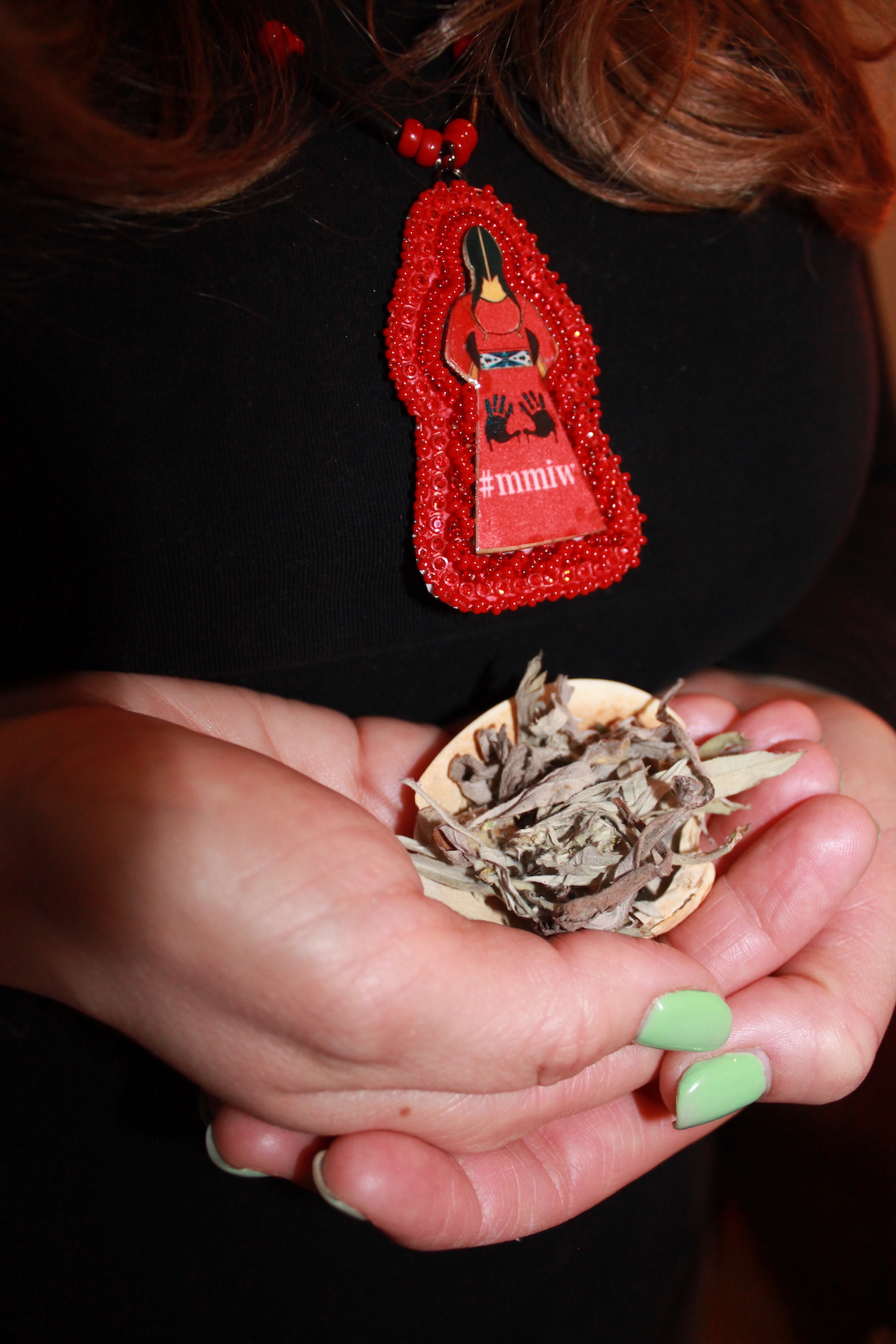
But it was known as a hotspot where more money could be made, so that was where she would be sent, stationed in a rented apartment with other women and girls to work 23-hour shifts for weeks on end.
For the First Nations and Metis (of mixed Indigenous and European heritage) women and girls among them, the feeling of danger was heightened by the racism they would encounter if their customers knew they were Indigenous.
“[So] we identified as either Latina, Asian or exotic, because if we self-identified as Indigenous, we would be devalued and our safety would be at risk,” April explains.
“They believe we (Indigenous and Metis women and girls) are disposable and invisible.”
She recalls a time she was sent to a high-rise apartment to meet a man.
“But I came to the door and heard a room full of guys’ voices. I said to myself ‘God, please no.'”
“I opened the door and saw a dozen pairs of work boots. I took off!”
She managed to get away, but was “fined” by her madame.
Situations like that were common, she says.
Another time in Fort McMurray she was sent to an apartment where she met a man in his 50s who was “strung out on crack cocaine”.
“He was describing to me how he liked to torture women by hanging them in his bedroom,” she recalls.
She inched her way towards the door. “It felt like an eternity. My mind was racing. A little voice inside said, ‘get out of there!'”
Seeking justice
April took more drugs to help her deal with situations like these. Then, one day, she woke up in New York City having seizures from a cocaine overdose.
“I was very broken. I was drinking every day and addicted to cocaine,” she says.
It was then she made the decision to fly back to Edmonton, to get off the drugs and to deal with the heartaches of her past.
It has been more than 15 years since she was “liberated” from sexual exploitation.
In those years, she has built a good life for herself. She has a career, is a mother of two and an outspoken advocate for Missing and Murdered Indigenous Women and Girls (MMIWG). She founded the Stolen Brothers and Sisters Awareness Movement, a grassroots organisation with an annual walk that draws hundreds of participants. Then, in 2019, she received a Woman of Vision award for her advocacy work.
“Because of my own pain and experience, it has given me the tools to be an advocate,” she explains. “I have compassion and empathy for those who are suffering. And there’s so many families grieving, seeking answers, seeking justice.”
Loss after loss after loss
Just over 1,000km (621 miles) west along the infamous Highway of Tears where dozens of women, mostly Indigenous, have gone missing or been found murdered since the 1970s, Delee Nikal is mourning several family members lost to the MMIWG crisis.
Delee is a member of the Witset Nation, a community belonging to the Wet’suwet’en band of five nations in northern British Columbia (BC).
She knows about loss.
Her 15-year-old cousin Cecilia Nikal went missing from Vancouver in 1989.
Then another cousin, Delphine Nikal, vanished along the Highway of Tears near Smithers, BC in 1990. She was also 15.
Four years later, Delee’s friend Romona Wilson disappeared from Smithers. Romona was a member of the Gitanmaxx band not far from Wet’suwet’en. Her body was later found in a wooded area west of the Smithers airport.
More heartache came in 2002 when Delee’s foster sister Danielle Larue, a member of Shuswap First Nation, disappeared from Vancouver’s east side. Police believe she was murdered.
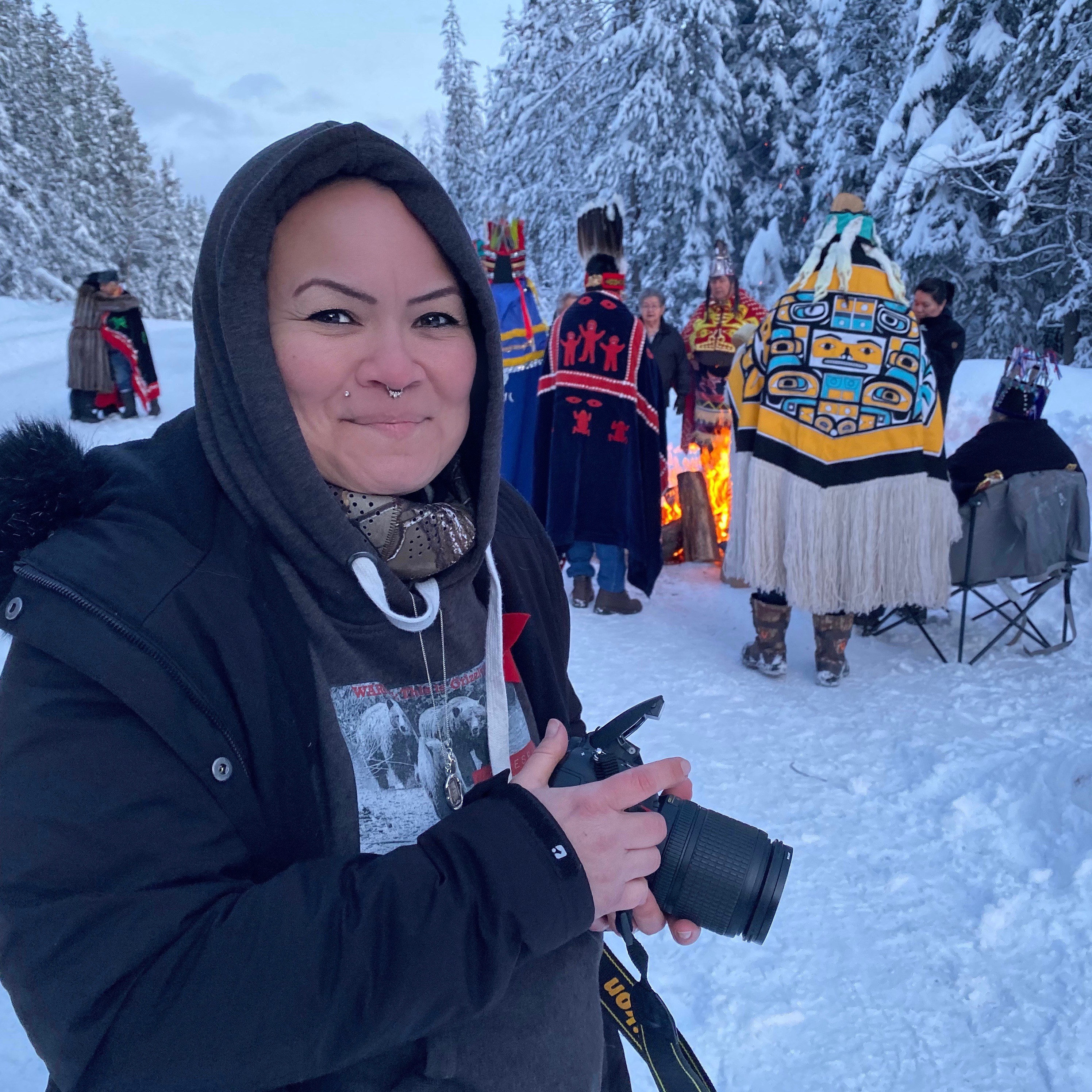
As a First Nations woman in an area where so many have gone missing or been murdered, Delee has always known fear. But her fears have been elevated since man camps and pipeline construction came to the area.
Construction on TransCanada’s $40bn Coastal GasLink (GCL), liquified natural gas (LNG) pipeline that will carry LNG from northwestern British Columbia to the north Pacific coast, began in late 2018.
Last June, Canada’s National Inquiry into Missing and Murdered Indigenous Women and Girls released its final report, in which it identified a link between “boomtown” and “man camp” environments that emerged around resource extraction projects and violence against Indigenous women and girls, as well as increased sex industry activities in those areas.
‘The land is our life-giver’
Wet’suwet’en First Nations Hereditary Chiefs have opposed the construction of the pipeline on their traditional territories.
Earlier this year, the Royal Canadian Mounted Police (RCMP) arrested and removed Wet’suwet’en land defenders and their supporters from camps along the route of the pipeline.
For Delee, who grew up on the Yintah (the Wet’suwet’en word for land), it was traumatic to watch.
“I was born into Gidumt’en,” she explains during a telephone interview with Al Jazeera from her home in Wiset, approximately 25 minutes east of Smithers.
Gidumt’en is a clan of the Wet’suewet’en peoples, whose territory part of the pipeline will run through.
“There used to be a massive huckleberry patch where they built one of the man camps near the Unist’ot’en healing camp. It’s an area where I and my ancestors harvested our medicines. It’s an amazing terrain, close to the water – now it’s just decimated. This is really hard for people who have grown up there,” she explains.
Over the past few months, Delee has noticed an influx of pipeline workers not only filling up the man camps but overflowing the hotels in Houston, the nearest town to the CGL construction site. She says she feels intimidated by their presence and worries that she and other local Indigenous women are at risk.
“It’s scary because they’re transient workers who have no connection to us, but they have the backing of the police,” she says, referring to how, since the Wet’suwet’en blockades, CGL workers now have police escorts to enter Wet’suwet’en territories.
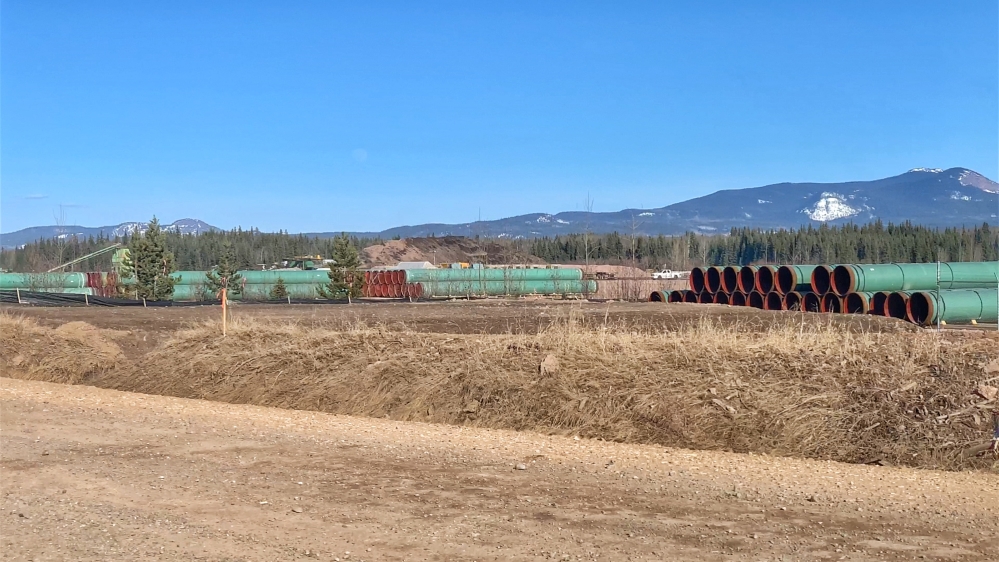
Even during the coronavirus pandemic, pipeline construction is continuing.
“They (CGL) said they’re slowing down work because of COVID-19, but I saw a hotel packed with about 50 trucks. There were guys standing outside shirtless, drinking beer with each other with Alberta plates on their trucks,” Delee explains.
James Anaya, former United Nations Special Rapporteur on the Rights of Indigenous Peoples, told [PDF] the National Inquiry into MMIWG that his research revealed a connection between the influx of transient workers and violence against Indigenous women.
“Over the last several years, I have carried out a study and reported on extractive industries affecting indigenous peoples. It has become evident through information received within the context of the study that extractive industries many times have different and often disproportionately adverse effects on indigenous peoples, and particularly on the health conditions of women,” he said.
“In addition, indigenous women have reported that the influx of workers into indigenous communities as a result of extractive projects also led to increased incidents of sexual harassment and violence, including rape and assault.”
Delee is certain that there is a link between violence against Indigenous women and girls and such projects.
“We (Wet’suwet’en) are taught the land is our life-giver, that water is like breast milk – we need it to survive. It’s a continuation of our mothers – the remains and cells of our ancestors are in it. So, when our land is being ripped apart; it’s a huge threat to us. They’re out there killing the land – they’re killing us.”
Just two years ago, Delee’s cousin Frances Brown went missing while harvesting wild mushrooms in a forest area outside Smithers. Although the police have not treated her disappearance as suspicious, Delee does not believe that her cousin, who was experienced in the heavily wooded area, got lost. Friends and family searched for her for weeks after the official search was called off, but never found her.
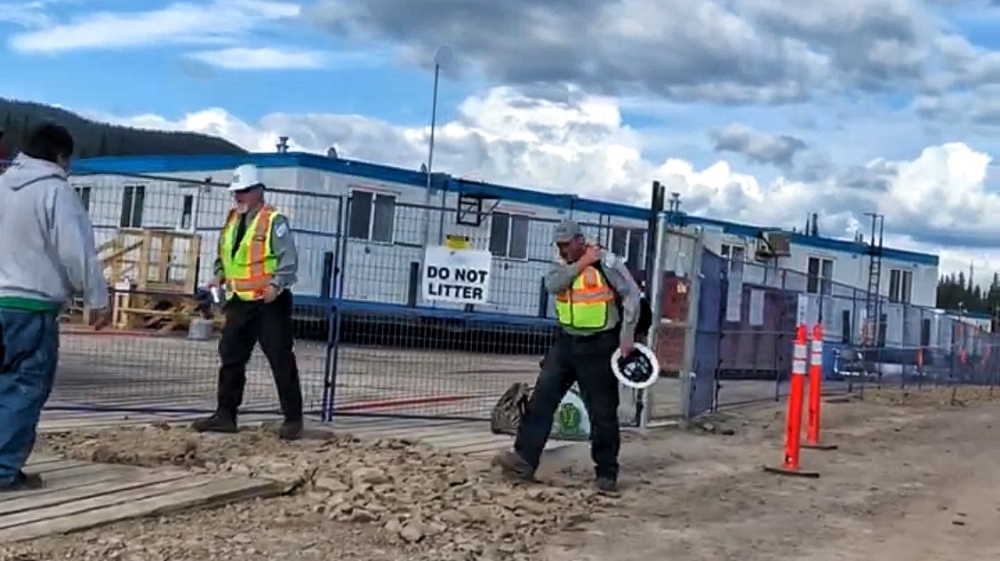
‘Women are still unsafe’
In late February, an Alberta energy company came under scrutiny after an image it produced with the company’s logo appeared to depict the rape of teenage climate activist Greta Thunberg.
The decal shows an image of a naked woman or girl, with two long braids (something often associated with Indigenous women and girls), from behind. The word “Greta” is written across her lower back.
The X-Site Energy Services company issued an apology following a public outcry over the image.
“We recognise that it is not enough to apologise for the image associated with our company logo on the decals that circulated last week,” a statement from X-Site Energy Services read.
“This does not reflect the values of this company or our employees, and we deeply regret the pain we may have caused.”
It is a pain that Melina Laboucan-Massimo of Lubicon Lake Cree Nation in northern Alberta felt deeply. Her younger sister Bella Laboucan-Mclean fell 31 storeys to her death from a downtown Toronto condo building where she was attending a party on July 20, 2013.
Bella had moved to Toronto to study fashion design at college. The police have called her death suspicious and the investigation into it is ongoing.
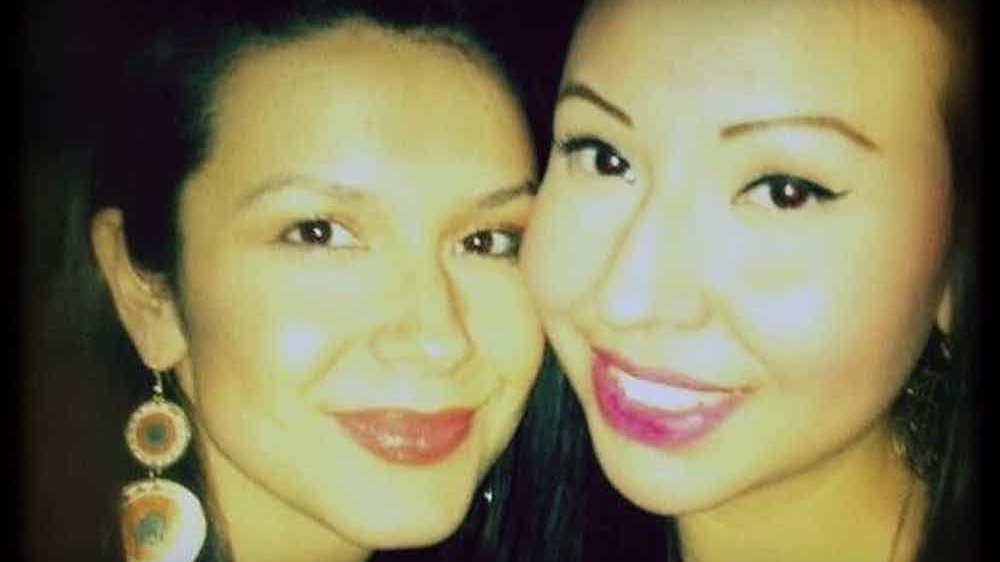
The decal brought back traumatic memories for Melina, who believes her sister may have been a victim of violence. When she saw the X-Site Energy Services decal circulating online, she felt disgusted.
“It was triggering because it made it very clear that women are still unsafe. I have the same views as Greta, so it doesn’t feel safe to speak that same message on Indigenous rights and climate justice issues,” she says.
The Canadian Association of Petroleum Producers (CAPP), an organisation representing companies involved in oil and gas development, denounced the decal image via a media release on February 28.
“We find this action, whomever is to blame, completely unacceptable. This kind of behaviour is not representative of Canada’s oil and natural gas industry, service companies who work in the industry, or the province of Alberta,” said Stacey Hatcher, CAPP’s vice-president of communications. “The industry holds human rights and social integrity in high regard, and we must speak up when we see behaviour so contrary to our values.”
But it was not the first time an Alberta company working in the oil and gas industry had received criticism for advertising violence against women.
In 2015, BeDevil Enterprises, located in Killam, Alberta, took out a billboard ad along highway 16 heading east. It featured a woman surrounded by flames, a track hoe with a screw pile over the woman along with the slogan “Screw piles. We drill them to hell and back.”
One of the owners of the company, Dan McRae, told the Edmonton Sun the ad was misinterpreted.
“We do screw pilings and a lot of people, I guess, just don’t understand it. The idea of the billboard is you can see the track hoe, the drivehead and the screwpile on it, and the woman lying on her back is a demon who’s asleep in hell and what we’re doing is we’re just showing everybody that we will work like b******* to get the job done,” said McRae.
“When we say we screw them to hell and back, that’s just an example we’re using. It has absolutely nothing to do with violence against women, misogynistic stuff. It has nothing to do with that. I have as much respect for women as they have for me. We don’t abuse women. I have had women working for me, and I have had nothing but good luck with that.”
McRae said the RCMP investigated the billboard and found no reason for it to be taken down.
‘A gender lens’
In a statement to Al Jazeera, CAPP said it is committed to ensuring the safety of Indigenous women and girls. It also pointed out its long history of working with its Indigenous partners and in Indigenous communities.
“The Canadian oil and natural gas industry recognises the significant concerns related to the health and welfare of Indigenous women and girls. Our industry prioritises the safety of the residents living in or near communities directly affected by operations, as well as our employees,” it said.
In late 2018, some industry advocates were angered by a comment made by Canadian Prime Minister Justin Trudeau at the G20 summit in Argentina.
During a panel discussion with members of the G20 Business Women Leaders Task Force, Trudeau said: “Even big infrastructure projects, you know might now say, ‘Well, what does a gender lens have to do with building this new highway or this new pipeline or something?’ Well, you know, there are gender impacts when you bring construction workers into a rural area. There are social impacts because they’re mostly male construction workers. How are you adjusting and adapting to those? That’s what the gender lens in GBA (gender-based analysis)-plus budgeting is all about.”
Among those to criticise Trudeau was the leader of the official opposition, Andrew Scheer.
“This is political correctness at its most ridiculous. The impacts of construction workers building things are prosperity and strong families. They should be celebrated, not demonized,” Scheer wrote on his twitter account on December 1, 2018. “I guess when you [Trudeau] inherit family wealth you have the luxury to make such idiotic statements.”
But the Final Report of Canada’s National Inquiry into Missing and Murdered Indigenous Women and Girls was clear about the link between resource extraction and spikes in violence against Indigenous women, girls and two-spirit people. “Two-spirit” refers to a person who identifies as having both a masculine and a feminine spirit, and is used by some Indigenous people to describe their sexual, gender and/or spiritual identity.
The report included the issue as part of its 231 Calls to Action to help stem the crisis.
‘To speak for my sisters’
Former MMIWG National Inquiry Commissioner Michele Audette has personal experience with the industry. She worked in man camps in northern Quebec teaching cultural protocols when she was president of the Native Women’s Association of Canada. During evening meals at the camp dining hall, Michele says she would often overhear derogatory conversations about Indigenous women.
“Every night, they (the workers) were making fun of Indigenous women at the bar. It’s a no respect, fly-in and fly-out culture,” she explains.
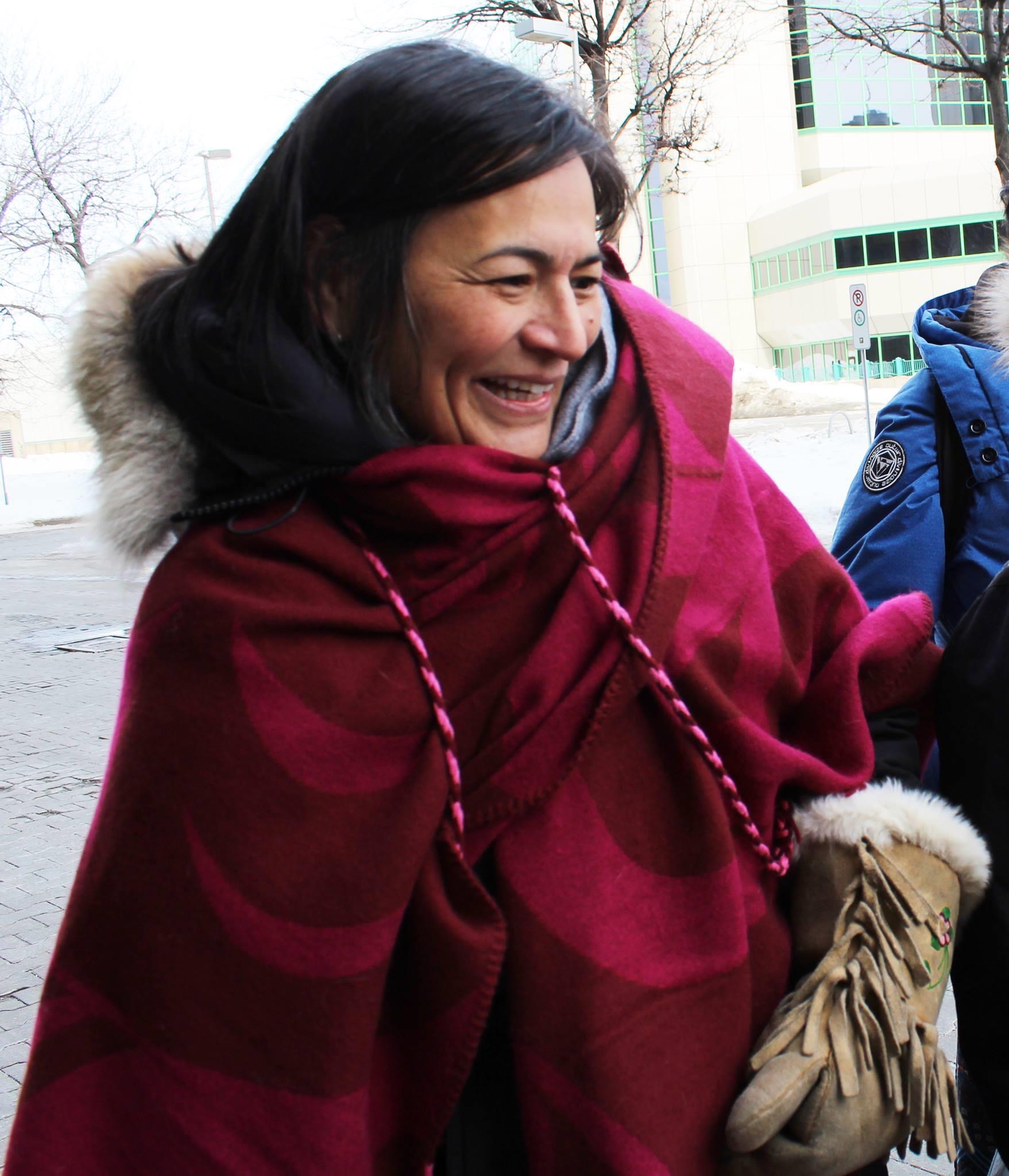
Along with the other inquiry commissioners, Michele travelled across Canada hearing the testimony of thousands of survivors and loved ones of MMIWG before preparing the final report.
In addition to hearing accounts of how Indigenous women and girls were directly harmed by people associated with resource extraction industries, it accepted evidence via a report by the Women’s Earth Alliance and the Native Youth Sexual Health Network which argued that the rise in alcohol and drug consumption associated with extractive industries also contributed to domestic violence within Indigenous communities.
Michele says she knows at least three Indigenous women who have been raped in a man camp in Quebec over the past decade, but that the women were too traumatised and afraid to press charges.
“There are attitudes in the industry that are still there since colonisation: that Indigenous women are considered Indians, savages and prostitutes. It’s sad to see and unacceptable,” she says.
Michele hopes Canada and industrial development companies will take the recommendations in the report seriously and address the issue of violence against Indigenous women and girls.
“We cannot keep doing this the way it has been done. If Canadians, politicians and industry want to include us, speak to us, create a safe space where we can have our say, then we can bring back that balance.”
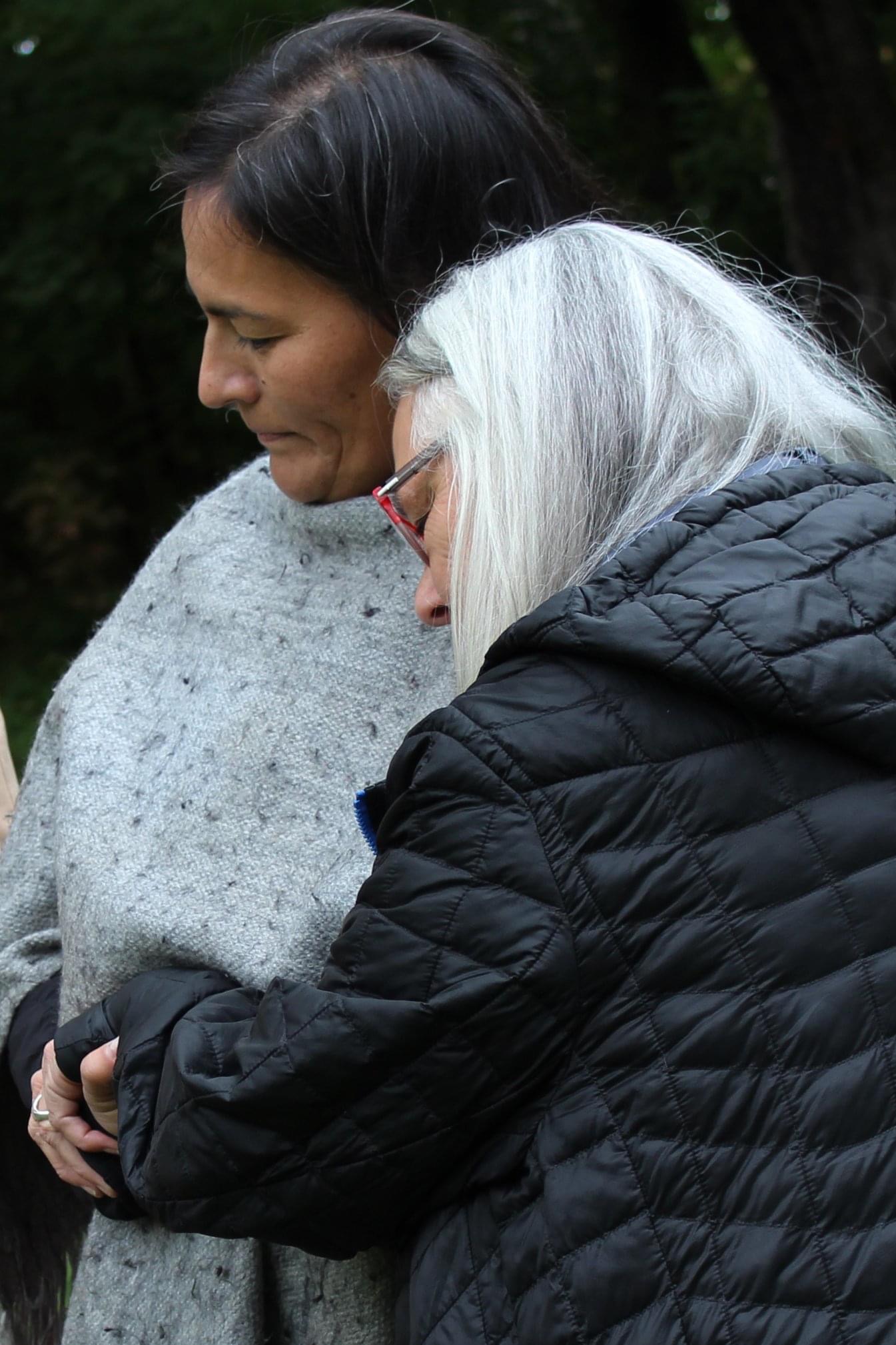
For Melina, there is a connection between abuse of the land and abuse of Indigenous women and girls. In 2011, a pipeline owned by Plains Midstream Canada ULC leaked 4.5 million litres of oil onto Cree traditional territories 30km (19 miles) from Lubicon Lake, where she is from. In 2013, the company was charged with three counts under Alberta’s Environmental Protection and Enhancement Act. The Lubicon Cree said fumes from the leaking oil made them sick with nausea, burning eyes and headaches.
The leak, Melina explains, was on a sacred area where the tribe harvested traditional medicines.
“There’s colonial values embedded with patriarchy in resource development industries,” she explains. “We all come from the same source (the land); our healing is connected to the healing and the protection of our land.”
Back in Edmonton, April remembers telling her story when the National Inquiry came there in 2017. She was scared; it was the first time she had shared her story in that type of setting. But it helped her to shed any lingering shame she felt and helped strengthen her to keep fighting for other women and girls.
She will keep going for as long as it takes, she says.
“I dream that we, along with our daughters, granddaughters can walk safely, with dignity wherever we go and be respected. I ask the Creator ‘why did I survive this?’ I believe, because as a survivor, I can speak for my sisters whose voices were silenced. They never had the opportunity to speak out.”